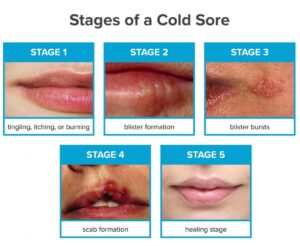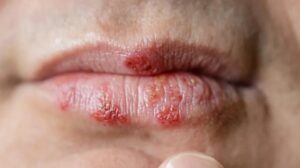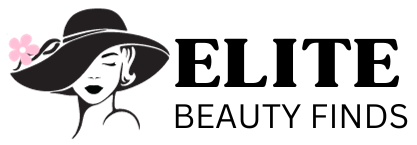Fitness
Cold Sore: Effective Treatments and Prevention Tips
Cold sore is a prevalent viral infection predominantly attributed to the herpes simplex virus type 1 (HSV-1), although this can occasionally be caused by the herpes simplex virus type 2 (HSV-2). These sores are highly infectious and can easily transmit from one person to another through direct physical contact. This includes activities such as kissing or sharing personal items that come into contact with the mouth, such as eating utensils or towels. The contagious nature of cold sores means that people must exercise caution to prevent their spread.
Additionally, certain factors can trigger the reactivation of the virus, leading to recurrent outbreaks. These triggers include prolonged exposure to sunlight, elevated body temperature due to fever, emotional stress, and hormonal changes during menstrual periods. When the dormant virus reactivates, it can cause the characteristic blisters to reappear, leading to discomfort and the potential for further transmission. Therefore, understanding the nature of cold sores and the factors that can provoke them is essential for managing and reducing the frequency of outbreaks.
What does a cold sore look like?
A cold sore generally progresses through several well-defined stages, each marked by distinct symptoms and appearances:

Initial Tingling and Itching
A tingling, itching, or burning sensation around the lips often heralds the onset of a cold sore. This phase can last for a day or so and serves as a warning sign for many individuals. During this period, the affected area might begin to feel slightly uncomfortable, indicating that a cold sore is about to develop.
Blister Formation
Following the initial tingling, small, fluid-filled blisters start to emerge, typically along the border of the lips. Red, inflamed skin usually surrounds these blisters, which may appear as a cluster of tiny, fluid-filled bumps. This stage is often accompanied by pain and discomfort as the blisters grow in size and number.
Oozing and Crusting
As the infection progresses, the small blisters may coalesce, forming larger blisters that eventually burst. This bursting leaves behind shallow, open sores that ooze fluid. Subsequently, a crust forms over these sores as they begin to dry out, typically taking on a yellow-brown hue. This crusting stage is crucial for protecting the underlying skin and initiating the healing process.
Healing
The final stage of a cold sore involves the shrinking and eventual falling off of the scab. As the scab dries and peels away, new skin forms beneath it, completing the healing process. This stage can take anywhere from seven to ten days, with the entire cycle of a cold sore, from initial tingling to complete healing, often spanning two to three weeks. Remarkably, this healing process usually occurs without leaving any scars, although the duration and severity can vary from person to person.
To summarize, a cold sore begins with a tingling sensation, quickly followed by the development of painful, fluid-filled blisters on or around the lips. These blisters burst, releasing fluid and forming a crusty scab that eventually falls off as the sore heals. The complete process, from the first sign of tingling to full recovery, typically lasts between two and three weeks, with the majority of cases resolving without permanent scarring. Understanding these stages can help individuals manage their symptoms more effectively and take appropriate measures to minimize discomfort and prevent the spread of the infection.
Read this: Alopecia Areata: Understanding and Managing Hair Loss
best cold sore treatment
To effectively treat a cold sore, begin antiviral medication as soon as you feel the initial tingling sensation or see the first blister appear. Prompt treatment can significantly reduce the duration and severity of the outbreak. There are several highly effective treatments available, including both prescription medications and over-the-counter options.
Prescription Antiviral Medications
- Acyclovir (Zovirax): This medication is available as both an oral tablet and a topical cream. Initiating treatment within 72 hours of the outbreak’s onset is most effective.
- Valacyclovir (Valtrex): Taken orally, this medication can reduce the healing time of cold sores by approximately one day if started early in the outbreak.
- Famciclovir (Famvir): Also an oral antiviral, Famciclovir may help cold sores heal more quickly when used promptly.
- Penciclovir (Denavir): This topical cream can accelerate the healing process by about a day when applied at the first sign of symptoms.
Over-the-Counter Treatments
- Docosanol (Abreva): Applying an over-the-counter antiviral cream, Docosanol, as soon as you notice the initial tingling sensation can help shorten the healing time.
- Benzyl Alcohol: Found in some over-the-counter creams, benzyl alcohol may aid in faster healing when used early in the outbreak.
Home Remedies
- Cold, Damp Washcloth or Ice Pack: Applying a cold, damp washcloth or ice pack to the affected area for 5–10 minutes several times a day can help reduce pain and swelling.
- Petroleum jelly: You can use this to soothe and protect the area, preventing further irritation and aiding in the healing process.
- Pain Relievers: Over-the-counter pain relievers like ibuprofen or acetaminophen can alleviate pain and reduce inflammation.
The crucial aspect of treatment is to begin as soon as possible, ideally within the first 24 to 72 hours of experiencing initial symptoms. Early intervention with antiviral medications is particularly effective in halting the virus’s replication process, thereby mitigating the severity and duration of the outbreak. While prescription and over-the-counter medications aim to expedite healing, home remedies can also offer symptomatic relief and potentially slightly hasten the recovery process. Despite these treatments, most cold sores will naturally heal within two to three weeks, whether or not any intervention is used. However, early and appropriate treatment can significantly improve comfort and reduce the impact of the outbreak.
Blister on lip not cold sore
A blister on the lip that is not attributed to a cold sore can arise from a variety of conditions, each with distinct causes and characteristics:

Canker Sores
Unlike cold sores, canker sores are small, painful ulcers that develop inside the mouth rather than on the outer lip. These sores are not contagious and are unrelated to the herpes virus. Their exact cause is unknown, but they can be triggered by factors such as stress, minor mouth injuries, acidic or spicy foods, and underlying health conditions.
Sunburn Blisters
Excessive exposure to sunlight can result in painful blisters forming on the lips. These sunburn-induced blisters occur due to the damage caused by ultraviolet (UV) rays and are not connected to the herpes simplex virus. They are a direct result of prolonged sun exposure and can be prevented by using lip balm with sunscreen.
Angular Cheilitis
This condition leads to red, swollen patches at the corners of the mouth, often accompanied by cracked, dry skin. Angular cheilitis can resemble cold sores in appearance but is caused by factors such as fungal or bacterial infections, vitamin deficiencies, or drooling rather than the herpes virus. It is not contagious and typically requires treatment with antifungal or antibacterial creams.
Herpetic Gingivostomatitis
This herpes simplex virus infection causes painful sores and blisters not only on the lips but also on the gums, tongue, and inside of the cheeks. Herpetic gingivostomatitis is a more extensive manifestation of the herpes virus and differs from the localized cold sore typically found on the outer lip.
Folate Deficiency
A deficiency in folate (vitamin B9) can lead to the development of mouth sores and cracks at the corners of the lips. These sores are a result of nutritional deficiency and can be addressed by improving dietary intake of folate-rich foods or taking supplements.
Key Differences
Cold sores are caused by the herpes simplex virus, appear on the outer lip, and are highly contagious. In contrast, other types of lip blisters have various origins and are not infectious. For instance, canker sores develop inside the mouth, sunburn blisters result from UV exposure, angular cheilitis stems from infections or irritation, herpetic gingivostomatitis affects a broader area within the mouth, and folate deficiency is a nutritional issue.
If you have a persistent or particularly painful blister on your lip, it is advisable to consult a healthcare professional for an accurate diagnosis and appropriate treatment. Various remedies, including topical creams, cold compresses, and over-the-counter pain relievers, can provide relief for many types of lip sores. A proper diagnosis is crucial to determining the underlying cause and receiving the most effective treatment.
How to get rid of a cold sore in 24 hours?
Unfortunately, it is impossible to completely eliminate a cold sore within just 24 hours. Typically, cold sores require 7–10 days to heal naturally, even with the aid of treatment. Nevertheless, there are several measures you can take to expedite the healing process and alleviate symptoms:
Early Application of Antiviral Creams: As soon as you notice the initial tingling sensation, apply an over-the-counter antiviral cream containing either acyclovir or penciclovir. These creams can reduce the healing time by about a day if used at the onset of the cold sore.
Pain and Inflammation Management: Over-the-counter pain relievers such as ibuprofen or acetaminophen can help to minimize pain and inflammation associated with cold sores.
Cold compresses: Applying a cold, damp washcloth or an ice pack to the affected area for 5-10 minutes several times a day can help to reduce pain and swelling.
Sun Protection: Use a lip balm with an SPF of 30 or higher to shield the healing cold sore from the sun, which can further irritate the area and potentially prolong the healing process.
Dietary Adjustments: Avoid consuming acidic or salty foods, as they can aggravate the sore. Opt for soft, cool foods that are less likely to cause irritation.
Hygiene Practices: Keep the affected area clean and avoid touching the cold sore to prevent spreading the virus to other parts of your body or to other people.
While these strategies can provide symptomatic relief and may marginally speed up the healing process, it’s crucial to manage expectations realistically. A cold sore will still require several days to heal completely, even with treatment. If a cold sore is particularly severe, fails to begin healing within a week, or recurs frequently, it is advisable to consult a healthcare professional for further advice and treatment options.


